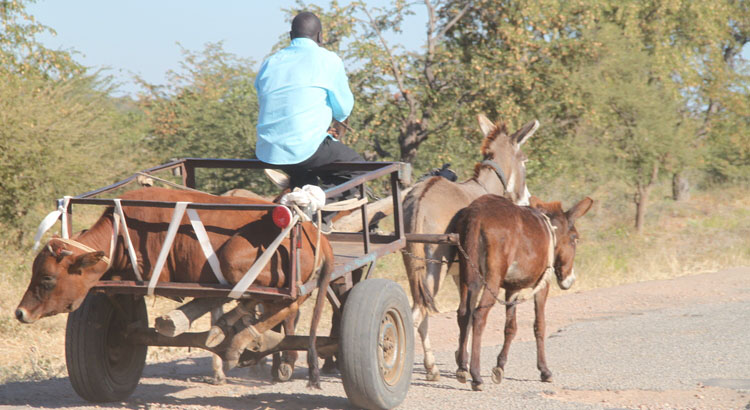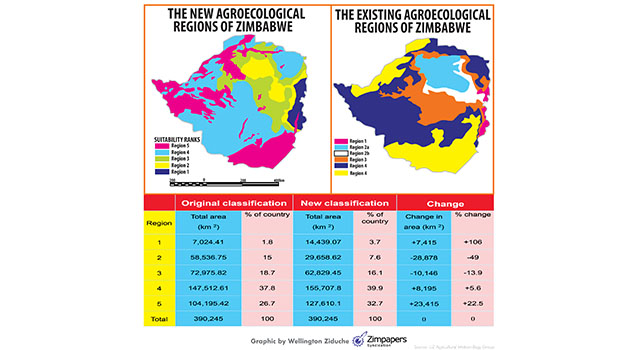SADC moves to adopt biometric voting systems
- By Zimpapers Syndication |
- 03 Apr, 2025 |
- 0

Sifelani Tsiko ---
SADC countries are now slowly moving to adopt the biometric voting system as the region steps up efforts to promote the use of high-tech tools to increase the credibility of the region’s electoral process.
This week, the Democratic Republic of Congo selected Gemalto, a leading Dutch digital security firm, to supply the National Independent Electoral Commission (CENI) with 22 000 mobile biometric voter enrollment kits.
DRC now joins Botswana, South Africa, Zimbabwe, Zambia and Malawi, the few SADC countries that have adopted or are still trying the biometric voting systems which are intended to ensure a clean register, eliminating “ghost” voters and multiple voting.
The biometric system which scans for either fingerprints or the iris (coloured part of the eye) and is already in use in 25 other African countries, aims to help deliver a credible election and reduce the likelihood of violence.
In a statement, Gemalto, which won the DRC international tender said it will soon start to support the updating of the country’s national voter register.
Gemalto’s fully portable Coesys Mobile Enrollment stations will enable 18 000 enrollment centres to rapidly acquire digital photographs, fingerprint and signature records of citizens, and instantly issue personalized voter cards for upcoming general elections.
The Dutch firm will also ‘train the trainers’ for CENI and provide comprehensive maintenance and support for this voter registration project, which represents one of the largest ever.
Gemalto’s Coesys Mobile Enrollment stations feature a ruggedized, suitcase-style design which can be deployed virtually anywhere across the country.
CENI will use the stations to ensure efficient and quality acquisition of voter’s personal details and biometric data that will be used to add new eligible voters, as well as clean and update existing records in the national voter register ahead of the elections.
The firm hopes the use of biometric data will help identify and eliminate duplicates.
CENI is responsible for managing and operating the entire enrollment process, and consolidating the voter registry.
“We needed a reliable partner to facilitate our ambitious program, which we expect will enroll up to 45 million voters,” said Corneille Nangaa, president of CENI.
“With a wealth of experience in enrollment and voter registry applications in Africa and beyond, Gemalto offered an excellent technical fit, and the ability to react quickly to our requirements.”
“Our secure mobile enrolment solution will enable CENI to establish a reliable and respected voter registry, based on undisputable biometric data, and provide all the flexibility required to set up voter registration bureau all across the country” said Frederic Trojani, a senior executive for Gemalto.
“Above all else, it provides the Democratic Republic of Congo with a trusted foundation towards free, fair and transparent elections.”
Zimbabwe, too, says it will engage international experts as it ratchets up efforts to implement the biometric voting system ahead of the 2018 general election.
The government approved biometric voting though its own officials were still consulting on how to manage it.
"It is a process which requires the training of our people, acquiring correct equipment for that. We are running a parallel system now. If we reach elections when the biometric equipment and so on and technical persons are in place, we use it, if not we continue (with manual system),” Vice President Emmerson Mnangagwa was quoted as saying.
"But the system (biometric) has been accepted. We are also consulting countries who have taken on board the biometric system for us to learn from them because most of the countries we have consulted are saying they made a mistake because in some cases it collapses and they go back to manual."
Botswana is set to adopt the biometric voting system by 2019.
South Africa also stands out on the continent as one of the few countries which has adopted biometric voter registration.
Most SADC countries and others elsewhere on the continent are moving to adopt the biometric system after encountering problems that have been associated with a manual voter registration system.
It was increasingly becoming difficult and costly for the countries to update voters roll.
Most electoral bodies in the region hope the introduction of biometric technology would inevitably lead to a much more transparent and legitimate electoral process.
Despite, the merits, the biometric voting system has its own weaknesses.
The system requires a huge capital outlay and implementation is becoming posing a headache for most SADC countries which are experiencing serious economic and financial challenges.
Poor implementation and inadequate infrastructure has emerged as the biggest handicap.
“It requires adequate telecommunications and electricity infrastructure that is not only reliable but will work with the greatest efficiency during an election period,” an election commentator says.
“Sadly where it has been used on the continent in at least 25 countries where it has been used, it has not worked in aide of democracy.”
While it has been argued that biometric verification could increase the credibility of the election process, recent experiences in elections in Africa have also exposed the weaknesses of the system.
In 2015, elections in Nigeria were marred by technical problems, in a disturbing trend that forced former president Goodluck Jonathan to wait nearly 50 minutes to cast his vote after the card reader failed to recognise his identity.
There were several reports of similar problems in the biometric voter systems inside Africa’s most populated country.
Similar problems have played out in Kenya, Zambia, Malawi, Ghana and Somaliland with biometric kits failing, forcing voting to be extended to the second day.
In some instances, there were malfunctions in both the biometric kits and more extensively, in the electronic tallying system forcing a manual tallying of votes.
Opposition leaders in both countries cried foul and challenged the results in court and lost.
Says Christine Mungai, in an 2015 online opinion: “Critics argue against the assumption that electronic systems are a “silver bullet” to the problems that plague elections. Rightly so, use of fancy card readers cannot avert the capture of entire polling stations by partisan interests, or prevent intimidation, vote buying, abuse of state resources or endemic political violence.
“What’s particularly illuminating is that more mature democracies are moving away from electronic voting systems, mainly because of their vulnerability to glitches, and their opacity - the inability to conclusively verify that electronic votes or the software on machines have not been manipulated.”
Despite, the shortcomings, the biometric voting system is seen as a better devil.
Experts say to-date, more than half of Africa has deployed biometrics in one way or another as countries seek to enhance transparency and credibility of electoral processes.
And, everything, it seems, points to the need for proper mechanisms to be put in place to ensure the successful implementation of the biometric voting system.
With adequate financial resources, proper training and support for electoral management bodies, the use of high-tech tools for voter registration can help create a more accurate and credible electoral process.
Biometrics can then help electoral management bodies reduce the number of duplications and produce a “cleaner” voter rolls, experts say.
No Comments














Comment